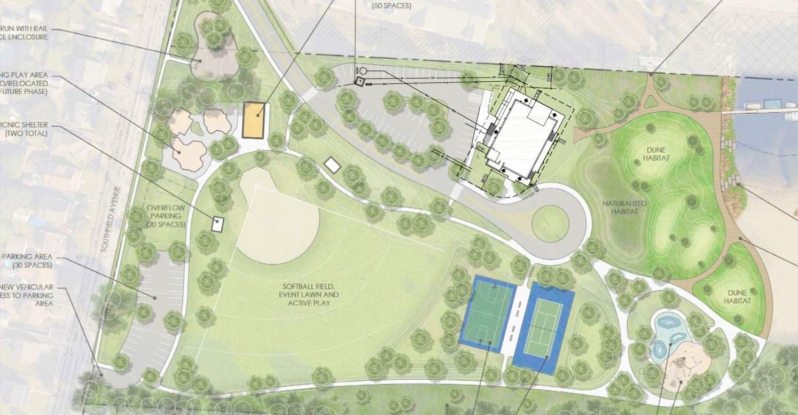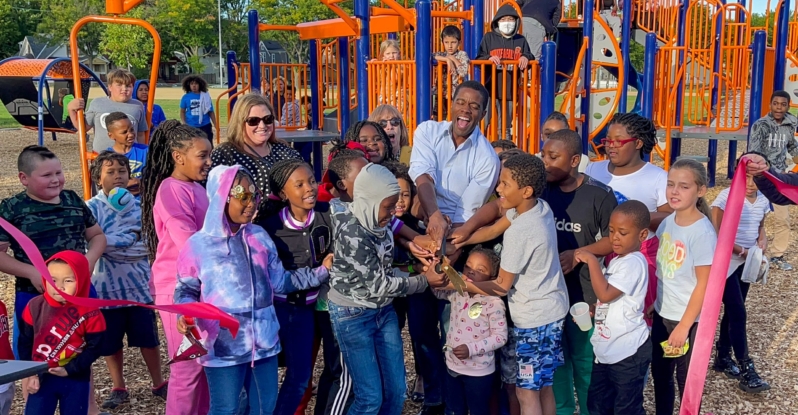
Caption: Town Branch Commons in Lexington, Kentucky transformed a previously car-centric corridor into a multi-modal, environmentally responsive greenway. Image courtesy SCAPE.
The term ‘civic infrastructure’ encompasses the public spaces where Americans connect with each other: the parks, trails, town squares, main streets, play spaces, libraries, and other places that are located in every rural, urban and suburban community across the country. These places are an incredible—but often overlooked and underfunded—resource, despite the fact that decades of research show that well-funded, programmed and managed civic infrastructure can help people and communities thrive.
The benefits of civic infrastructure touch many of the social, economic and environmental issues our urban, rural and suburban communities address on a daily basis. Well-funded and managed civic infrastructure can boost local economies, improve people’s health and well-being, reduce crime and violence, increase participation in local governance, and enhance communities’ resilience to climate and natural disaster challenges through things like stormwater management and cooler air temperatures.
For nearly three years, the 24-member Percent for Place coalition (of which City Parks Alliance is a member) has been both advocating for increased federal funding for civic infrastructure and working to connect community leaders and organizations with new funding opportunities. With demand for civic infrastructure growing, we are thrilled to report that in 2024, there are significant funds available from the federal government for community-driven improvements in civic infrastructure—if community leaders know where to look and how to apply.
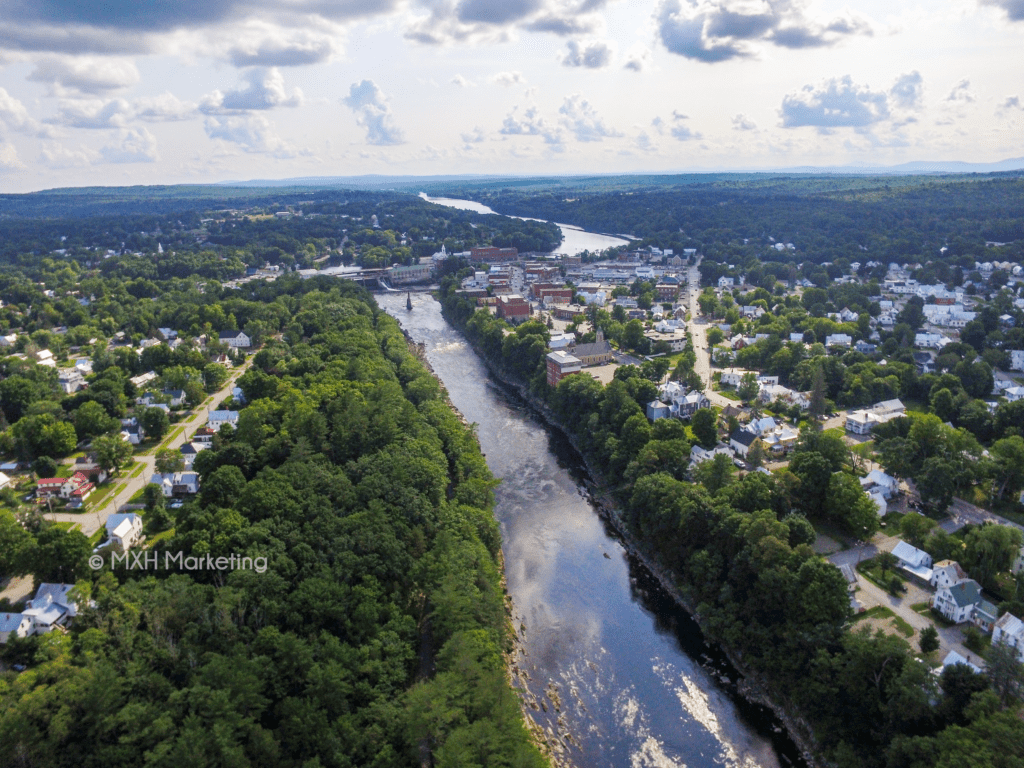
Caption: Main Street Skowhegan leverages its historic downtown, outdoor recreational assets, food and cultural hubs to support job creation and the development of public spaces that support connection, reduce loneliness and increase well-being. Images credit: MXH Marketing.
Innovative Partnerships and Creative Thinking Can Unlock Investment
For example, the Bipartisan Infrastructure Law (BIL) contains billions of dollars to uplift communities through infrastructure improvements. If funding is applied innovatively by communities, programs created or expanded through this and other federal funding streams can support civic infrastructure investments.
These streams of funding are already providing support for civic infrastructure through individual federal department programs. For example, the US Department of Transportation’s (USDOT) Rebuilding American Infrastructure with Sustainability and Equity (RAISE) program is funded by the Bipartisan Infrastructure Law. The Biden Administration recently announced $1.5 billion in funding for 2024 through RAISE to support “transportation projects with significant local or regional impact,” including road, rail, transit, and port projects that promise to achieve national objectives. State and local jurisdictions can obtain funding for multi-modal, multi-jurisdictional projects that are often more difficult to support through traditional USDOT programs.
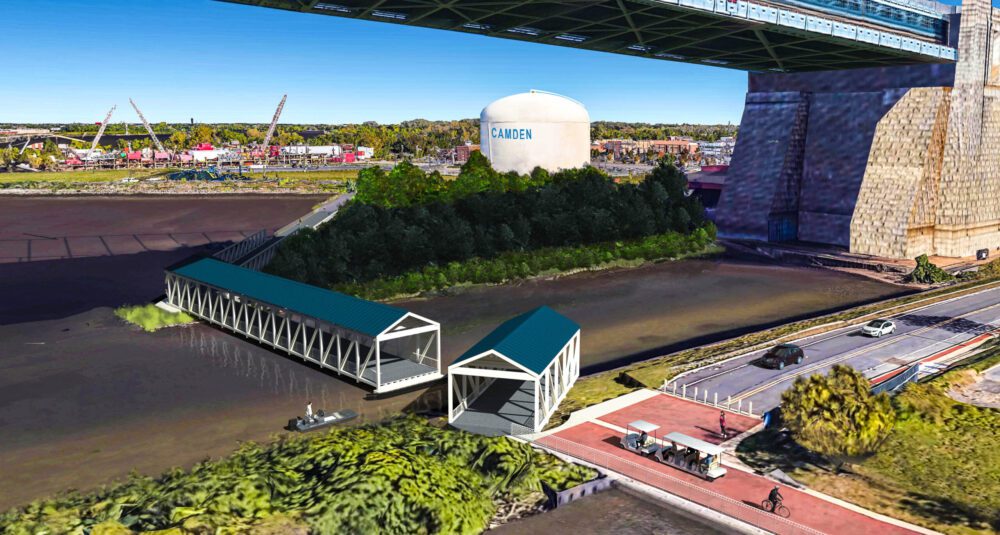
Caption: The LINK trail once complete will connect 17 communities in Camden County, and the RAISE funding supports the creation of critical connective segments like the swing bridge at Coopers Poynt. Images courtesy Camden Community Partnership.
These investments are being made in communities of all sizes, and for a variety of civic infrastructure. For instance, in Camden, New Jersey, a $19 million RAISE grant is funding the city’s 34-mile multi-use LINK trail, supporting the design and construction of critical trail segments to connect public spaces including Cooper’s Poynt Park and Cramer Hill Waterfront Park. Mansfield, Ohio was awarded a nearly $7.5 million RAISE grant in 2022 to support the revitalization of its Main Street through streetscape investments, such as improved walkability, increased accessibility, and placemaking improvements including a new plaza and lighting.
Programs from other federal agencies and recently enacted legislation are providing additional funding. Main Street Skowhegan, a small town revitalization organization, was awarded a first-phase Strategy Development Grant through the Economic Development Administration’s Recompete Pilot Program, which targets economically distressed communities and is funded through the CHIPS and Science Act. Under Main Street Skowhegan’s leadership, a regional coalition of rural communities has been invited to apply for a $20-50M implementation grant to support a robust set of job creation and workforce development activities. Beyond traditional economic development, the project includes investments in public space and programming to connect residents, reduce loneliness and increase well-being.
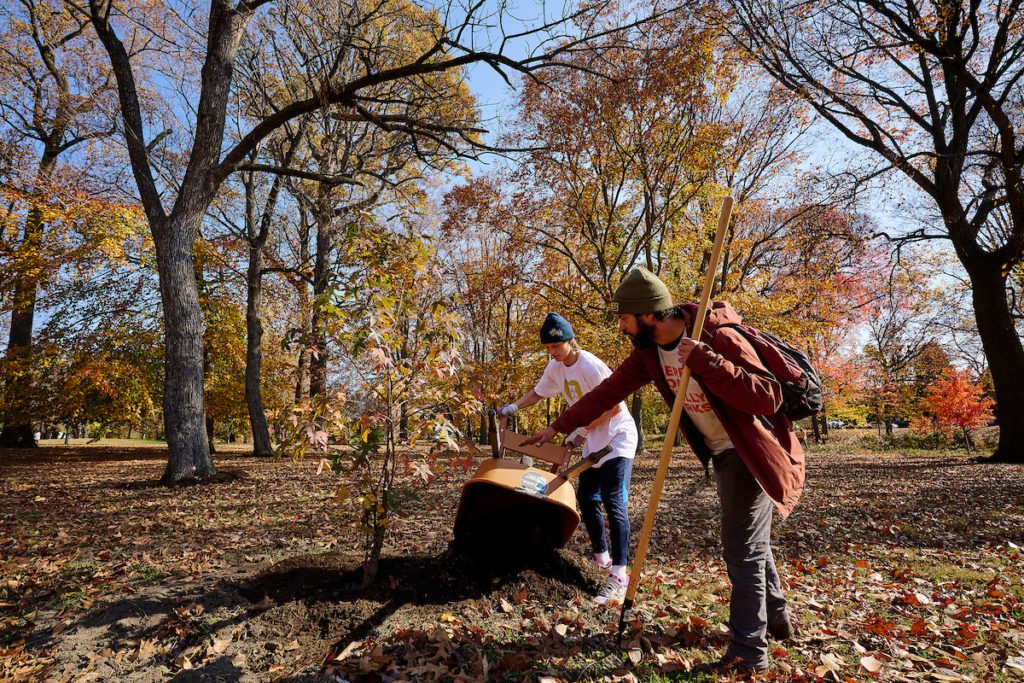
Caption: The Philly Tree Plan is an ambitious effort to develop and maintain the city’s urban forest. Image credit: Albert Yee.
November 11, 2023 for Fairmount Park Conservancy
In Philadelphia, the city’s much-lauded 10-year Philly Tree Plan received a $12 million Community Forestry Grant from the Department of Agriculture’s Forest Service, part of a historic $1 billion national investment being channeled into nearly 400 projects to expand access to trees and green spaces in communities across the country. All of the funding and benefits from the Philadelphia plan are flowing to disadvantaged communities.
Many successfully funded projects are ones that benefit from public-private partnerships, including involving advocates from the beginning. For example, the Philadelphia Tree Plan was supported by a diverse and growing partnership of organizations, including the city’s Parks Department, Fairmount Park Conservancy, the Pennsylvania Horticultural Society, PowerCorps PHL, the Sustainable Business Network, and the Public Health Management Corporation alongside philanthropic partners William Penn Foundation and TD Bank.
Here is a summary of nearly 20 federal programs from a variety of departments that can be used to fund civic infrastructure projects. Full details can be viewed here.
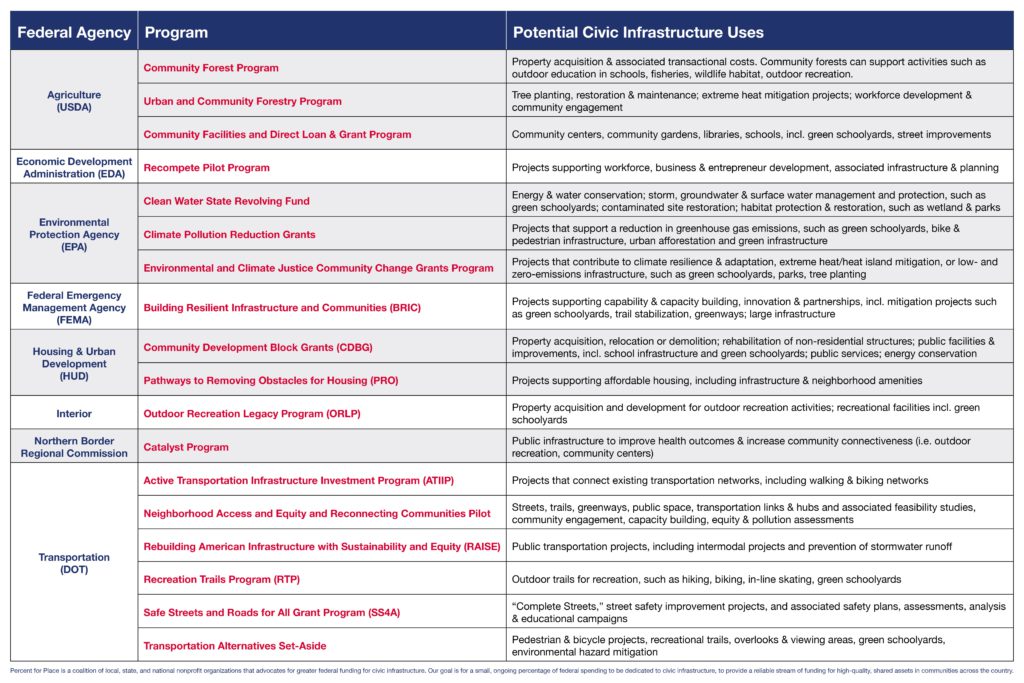
Challenges and Resources
Successfully accessing federal funding for civic infrastructure does pose challenges to state and local leaders and staff. Trying to coordinate various programs and organizations at the local level through the federal agency grant application process takes time and effort, and often lands on top of other competing priorities. Once federal funding is won, many local and state governments and organizations scramble to create the capacity to deploy funds.
There are a few resources available to help:
- The Biden Administration developed a Technical Assistance Guide to help make it easier for communities across the country to navigate, access, and deploy infrastructure, climate resilience and clean energy funding.
- The National League of Cities Local Infrastructure Hub provides “bootcamps” specifically designed to help small and mid-sized local governments take advantage of BIL grant opportunities.
- City Parks Alliance has an Equitable Park Funding Hub that provides easy access to information on a variety of funding sources relevant for parks and recreation in low-income communities and communities of color.Federal government agencies are working to break down internal silos through the
- Thriving Communities Network, which aims to more easily deploy place-based technical assistance and capacity-building resources to urban, rural, and Tribal communities experiencing a history of economic distress and systemic disinvestment.
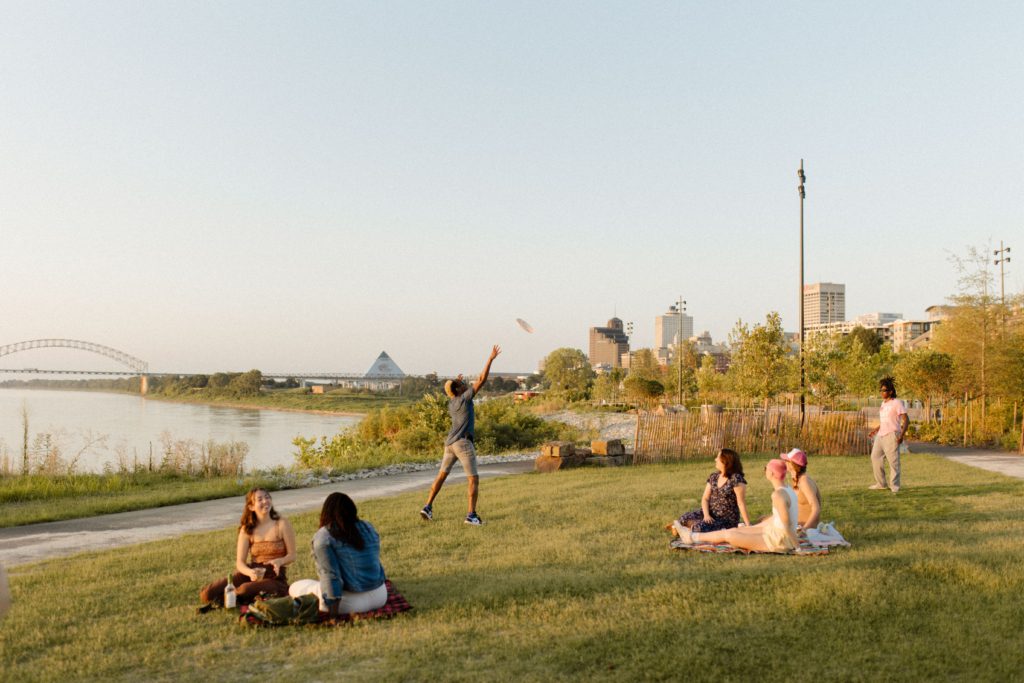
Caption: The Ohio & Erie Canal Towpath Trail in Akron, Ohio and Tom Lee Park in Memphis, Tennessee are examples of the powerful potential of civic infrastructure. Image courtesy Downtown Akron Partnership and credit: Connor Ryan.
More Funding, Delivered Differently
Demand for civic infrastructure is on the rise, as evidenced by resident preferences for walkable communities as well as proximity to vibrant downtowns and public spaces such as parks. With good reason, too—research shows that investments in quality of life and of place can significantly impact economic prosperity. Many community leaders are prioritizing these types of investments, and policymakers at the federal level are responding: many civic infrastructure projects were funded through Congress’ last ‘omnibus Appropriations Bill,’ earmarked by federal legislators on both sides of the aisle—supporting parks, trails, community centers, and active main streets in urban, suburban and rural communities. Another set of specified projects are expected to be included in any final 2024 appropriations.
Growing demand and the examples of federal investment in community-driven projects clearly demonstrate the need for more flexible, ‘de-siloed,’ streamlined federal civic infrastructure funding. Consolidating federal funding flows (as opposed to requiring communities to do this work by piecing together a mishmash of federal funding streams, regulations, and paperwork) would be much more cost-efficient for both local and federal government. Better coordination at the federal level would allow more dollars to be allocated to project design, implementation and management to support the high-quality civic infrastructure needed in communities of all sizes.
Investing in civic infrastructure benefits all Americans, ensuring healthier residents, vibrant local economies, and more resilient communities. The Percent for Place coalition invites you to envision a future where we can invest in civic infrastructure—without having to navigate a maze of narrow, siloed federal programs—in a way that recognizes the inherent and multi-faceted value of these investments.
–
Percent for Place is a coalition of local, state, and national nonprofit organizations that advocates for greater federal funding for civic infrastructure. Our goal is for a small, ongoing percentage of federal spending to be dedicated to civic infrastructure, to provide a reliable stream of funding for high-quality, shared assets in communities across the country.


